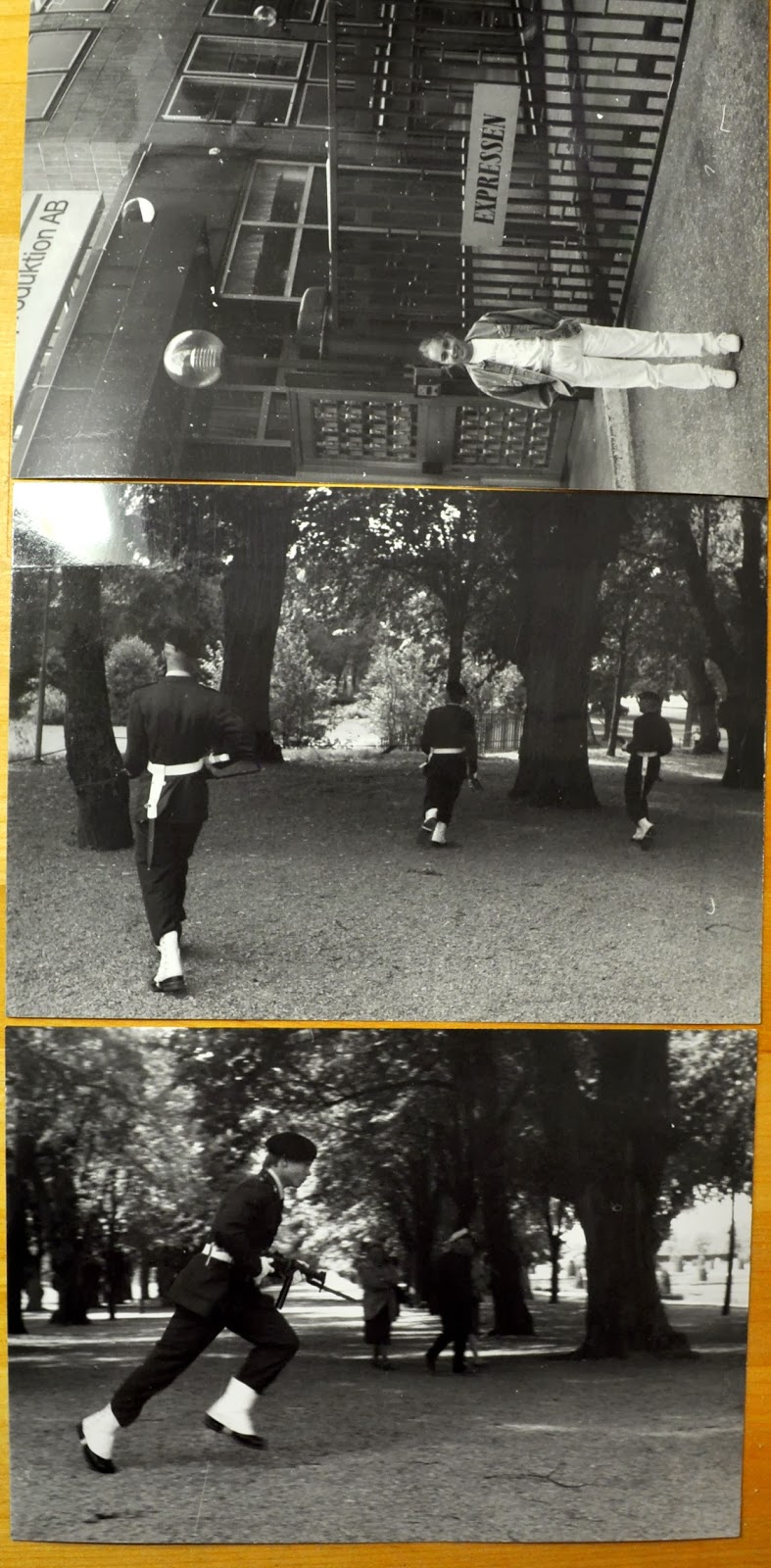The best camera is the one used in the right moment
For many, many years ago I did a day trip to Drottningholm with my wifes friend from Poland to give her an experience a historic milieu.
Drottningholm Palace is my favorite place in Stockholm and is on UNESCO's World Heritage list. Royal castle was built in the 1600s and actually represents all European architecture for that period. Influenced by French prototype, the palace was built by architect Nicodemus Tessin the Elder by commission of Queen Hedvig Eleonora.
Magnificent baroque gardens and Chinese Pavilion and the palace theatre are my favorite places when visiting Drottningholm.
The name Drottningholm literally meaning "Queen's islet" came from former stone palace built by John III of Sweden in 1580 for his Polish queen, Catherine Jagellon or as she was called in Poland Katarzyna Jagiellonka born in Krakow.
 |
| The Palace in Drottningholm is guarded by the Swedish Military in the same fashion as Stockholm Palace. |
So, one day I was there again, showing my favorites for my Polish friends!
The Palace in Drottningholm is guarded by the Swedish Military in the same fashion as Stockholm Palace. I am mentioning it as one of my friends was once a commanding officer for these two objects.
 |
| So, one day I was there again, showing my favorites for my Polish friends. |
So, one day I was there again, showing my favorites for my Polish friends.... and suddenly saw many soldiers running and officers screaming commands. I thought that it was kind of a drill and tog some pictures of running soldiers and soldiers searching the park. My thought was to give them to my Swedish friend, at that time major in the Swedish army. I borrowed my daughter blue Kodak VR35 camera that she got from Rudolph from Australia.
 |
Suddenly, I saw many soldiers running and officers screaming commands. I thought that it was kind of a drill and tog some pictures of running soldiers and soldiers searching the park. I took som pictures with Kodak TX 135-36 Tri-X Pan Black & White Print Film (ISO or ASA - 400).
On my way home I passed the home of my friends living in Bromma Kyrka. We told them upon arrival that we just were visiting Drottningholm palace. Drottningholm! There is robbery going on! Now!, my friend said after he was listening to the news on radio. |
This day I found that the best camera is the one used in the right moment!
 |
| Our VR35 K4a with Kodar lens f 5.6. Kodak was for many year building the very popular Instamatic cameras that used 126 or 110 drop-in cartridge film. Both my brothers and father used them. This resulted in many, many bad pictures. Other camera makers introduced already numerous moderately priced and easy-to-use compact 35 mm snapshot cameras. Kodak’s Instamatic business delayed their own 35 mm film cameras. In 1986 Kodak responded by introducing the made-in-Japan VR35 line of point-and-shoot cameras. Our VR35 camera has fixed-focus lenses one have to set the film speed manually. I liked the 38mm wide-angle lens, it's a lot more practical for snapshots than a 50 mm+ one. |
Quick coffee and full speed with our Fiat 127, home to Kungsholmen (Kings island). Developing the film at home and than visiting Dagens Nyheter, Expressen and Svenska Dagbladet newspapers. All of them at Marieberg at Kungsholmen. My oldest daughter followed me to all the places as it was her blue Kodak camera.
 |
| My oldest daughter followed me to all the places as it was her blue Kodak camera. |
We do have some pictures from the ongoing robbery in Drottningholm Palace,
I said softly,
but may be you have your own.....
and the first two pictures were sold.
After that we went to Klara. Klara (also known, in Swedish, as Klarakvarteren) is a part of lower Norrmalm in the central part of Stockholm. It has its name from Klara Church. The entire Klara quarter used to be Stockholm's Fleet Street newspaper quarters before some of the papers moved to Kungsholmen. So my goal was Aftonbladet! The same procedure as before and the pictures were sold for the 4th time.
Leaving Aftonbladet I saw that AP - Associated Press was in the same building, fifth sale. Associated Press was distributing the picture to the newspapers all over the world.






































